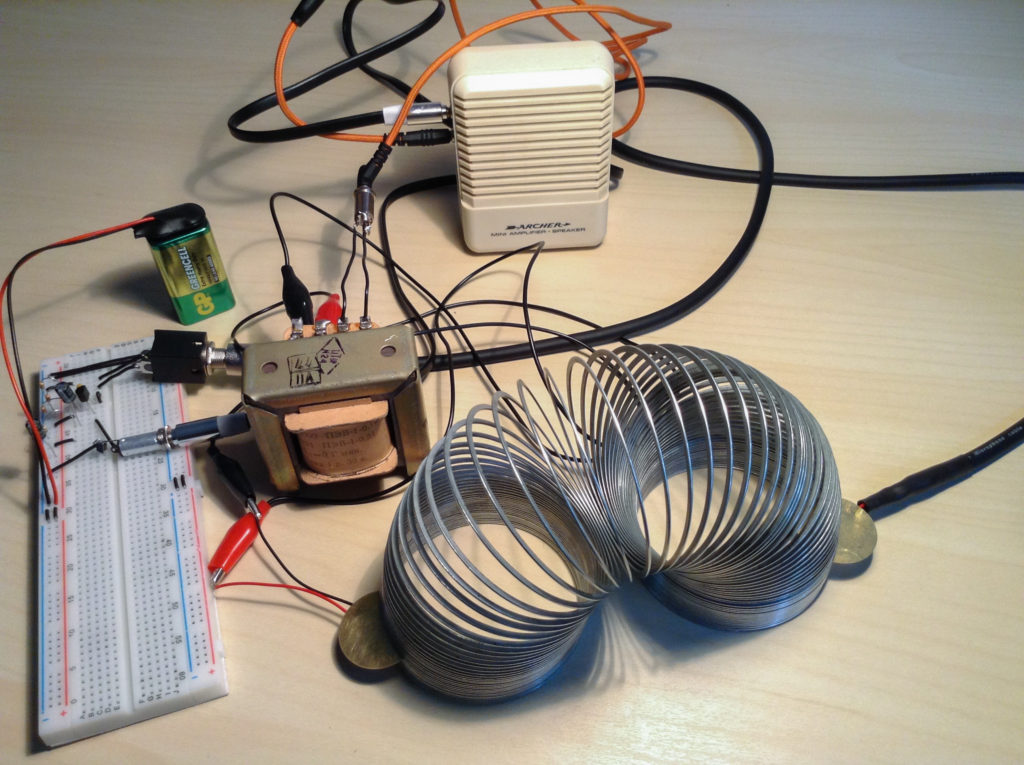Ever been wondering how to use a contact mic with your DIY synthesizer? Say, as a trigger for the envelope generator or as an impulse to the resonant low-pass filter? If you think of contact microphones in modular fashion, this is just a pinch of what they are capable of.
Piezo electricity is there to be a transducer, the medium between electronic and acoustic domain. Meaning the piezo disc can pick up vibes as well as vibrate itself like a regular speaker. When both of these functions get together – with one mic listening to its own electrical signal from another mic – you get feedback which is nothing but an oscillator.
The contact mic also allows building processing units from solid materials. Turn slinky into a spring reverb effect, make a crumpled plastic case into a band-pass filter, boost the lows with a balloon equalizer or let piezo itself, considering its high voltage output, drive the op-amp overdrive unit.
Anton Prykhodko will spawn a plethora of contact microphones to explore interaction between electronic and piezoelectric circuits. To get all those squeaks and creaks he will plug sound modules into a mixer matrix with multiple outputs and feedback paths.
